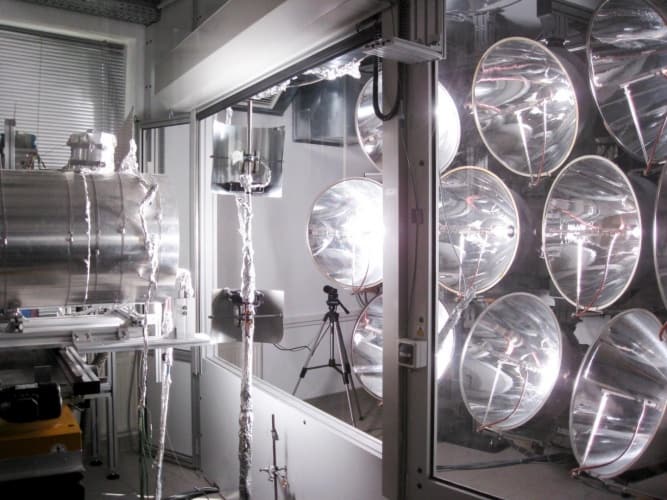
(Credit: DLR)
Developed by scientists at the German Aerospace Centre (DLR), CONTISOL uses concentrated solar power (CSP) in a similar way to a solar thermal plant. However, rather than converting the CSP into electricity, it channels the solar energy into a monolithic cylindrical reactor with multiple channels.
Half of these channels are used for chemical reactions that split methane or water into hydrogen, while the other half heat air to temperatures in excess of 1,000°C, which is then diverted for thermal energy storage. Once the sun has dropped, the flow of the air channels is reversed, and heat that has been stored during the day continues to power the thermochemical reactions throughout the night. The work is published in Applied Thermal Engineering.
“So the main idea of CONTISOL was to build two reactors together," said lead author Justin Lapp, formerly of DLR, and now Assistant Professor of Mechanical Engineering at the University of Maine.
"One where sunlight is directly doing chemical processing. The other side for storing energy. In the chemical channels the high temperatures of the material drive the chemical reaction and you get a change from reactants to products within those channels, and in the air channels cooler air goes in the front and hotter air comes out the back."
CONTISOL was tested at Cologne, Germany using simulated 'suns' rather than an actual solar field, with the storage and heat exchanger also simulated. According to the team, silicon carbide was used for the reactor material, but the high-performance alloy Inconel – which is easier to machine – is being explored as an alternative. During testing, methane was successfully reformed into hydrogen at temperatures of around 850°C. However, the researchers claim the reactor could be used to power a variety of reactions.
“One interesting one is hydrogen production from sulphuric acid as a cycling material,” said Lapp. “When you evaporate sulphuric acid at about 400°C into steam and SO3, it is not corrosive, so you can even use stainless steel components."
While the lab prototype operated at just 5kW, Lapp believes the solar reactor could be scaled up significantly for industrial and commercial applications.
"Commercially, 1-5MW would be about the smallest for industrial-scale reactors, and they could scale to 100MW or even larger,” he said.




Project to investigate hybrid approach to titanium manufacturing
What is this a hybrid of? Superplastic forming tends to be performed slowly as otherwise the behaviour is the hot creep that typifies hot...